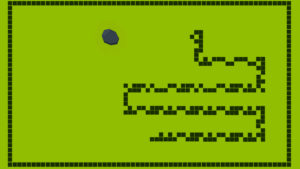Are these sold off iron ore stocks ready for China to go ‘Covid Hero’?

Picture: Getty Images
- Iron ore roared back to life yesterday on news China was starting to alter its Covid settings and provide credit support to property developers
- Prices surged to their highest level in a month, almost touching US$96/t in Singapore intra-day
- We take a look at sold-off stocks that could benefit from higher iron ore prices if China unlocks its Covid shackles
It’s been a while since iron ore was really shining.
But Australia’s largest export commodity, which has ceded its role as the nation’s biggest earner to booming coal in recent months, roared back to life yesterday.
Singapore futures lifted over 5% to almost US$96/t early doors, their strongest level in a month, having fallen as low as US$77.17/t in the interim.
They later settled at US$94.15/t, with gains pulling back to 3.14%. Dalian’s January 62% Fe contract rose 2.08% to US$101.03/t as of 5pm AEDT.
It came with news Chinese authorities had announced some early shifts in its policy to contain outbreaks of Covid-19, known colloquially as the Covid-Zero strategy, which has seen waves of lockdowns crimp Chinese economic output and home building throughout 2022.
Not everyone sees the changes as a major shift.
But quarantine times have been shortened for overseas guests and mass testing is being wound back. Credit lines have also been extended for struggling property developers, who have found it hard to convince people unable to work due to restrictions to stump up on new homes.
The relationship between Australian miners and Chinese steel producers is the cornerstone of the global steel and iron ore market; the supply chain that links the Pilbara’s ports with China’s steel factories runs so smoothly it is often described as a conveyor belt.
China imports around four out of every five tonnes we mine and produces almost 60% of the world’s crude steel, and we supply around 60% of the global seaborne trade.
For that reason China’s economy rules all when it comes to iron ore prices.
Unsurprisingly, iron ore stocks have had a tough time since March, when Covid issues really took hold and prices began their descent from year highs of US$163/t. As recently as late October 80% of Chinese steel mills were losing money.
Over the past six months the median loss for the iron ore companies tracked by Stockhead has been 16%. But after the sell-off, like with other commodities, does China’s eventual return from seclusion present opportunity?
Recent winners
Yesterday was a massive day for iron ore investors.
Fortescue Metals Group (ASX:FMG) closed the day up 10.08%, with China believer BHP (ASX:BHP) lifting 4.56% and Rio Tinto (ASX:RIO) up 3.28%.
Among the smaller players MinRes (ASX:MIN) was up 3.11%, with Champion Iron (ASX:CIA) soaring 12.92% to $6.03, levels it hasn’t touched since June. Grange Resources (ASX:GRR) climbed 9.33% and marginal producersFenix Resources (ASX:FEX) and Mt Gibson Iron (ASX:MGX) were up 9.09% and 4.4% respectively.
Over the past six months three iron ore plays on our 42 strong watch list are unchanged, including FMG, with 11 in the winner’s circle.
But drill down a bit deeper and it’s not quite so rosy.
Dreadnought Resources (ASX:DRE) is up 163%, but that’s mainly due to a rare earths discovery in WA.
Havilah (ASX:HAV), similarly, is up 91% due to an option deal to sell its Kalkaroo copper and gold project to OZ Minerals (ASX:OZL).
Mineral Resources is up 56%, hitting another all time high of $84.63 a share yesterday. But the $15 billion monster is charging up due to its position as one of the world’s largest lithium miners, not iron ore.
While MinRes has approved the development of its 60% owned 35Mtpa Onslow Hub at a cost of $3 billion, a project that would place it at a similar end of the cost curve as BHP, Rio and FMG, its operating iron ore mines in the Pilbara and Yilgarn regions are marginal at current prices.
Others are largely idiosyncratic, with only a handful of genuine iron ore gainers. Arrow Minerals (ASX:AMD) (up 29%) made a counter-cyclical move into iron ore by acquiring a tenement near the Simandou mine in Guinea — the world’s largest undeveloped high grade hematite deposit.
Mark Creasy backed CZR Resources (ASX:CZR) (up 7%) has been building the resource at its Robe Mesa deposit, but has run periodically on gossip that neighbour Rio Tinto will engineer a takeover.
Red Hill Iron (ASX:RHI), which has agreed to share infrastructure with CZR should they be able to enter production in their own rights, made a handy $200m cash from MinRes when it sold its share in the Red Hill Iron Ore JV to Chris Ellison’s mob last year, and will pocket another $200m when it enters production.
It last week announced a 20c per share special dividend.
Outside of that BHP, banking massive wads of cash thanks to a coal boom, is up 8% over the past six months, and Rio is up a spare 1%.
The other 28?
Well they’ve fallen foul of the shifting sentiment for iron ore in recent times.
The hardest hit is Hawsons Iron (ASX:HIO), owner of the 20Mtpa magnetite project of the same name near Broken Hill in New South Wales.
It is down 82% over the past six months, most of that in the past month after announcing it would not be able to complete a bankable feasibility study on the project this year, raising the prospect of another cash call to complete the study.
Other pure play iron ore stocks down more than 50% over the past six months include Macarthur Minerals (ASX:MIO) (-56%), Pearl Gull Iron (ASX:PLG) (-60%) and Magnum Mining (ASX:MGU) (-57%), while GWR Group (ASX:GWR), which wound back production at its Wiluna West mine last year and pivoted to magnesium, is down 58%.
But if the recent slide below US$80/t is indeed the bottom for iron ore, some of these companies recently in the red could present a bit of value at the riskier end of the market.
Here are a few interesting names who’ve been heavily sold down due to China’s steel and Covid troubles.
CuFe (ASX:CUF)
Shares in CuFe are down 30% since May, and the company was recently forced to temporarily suspend production at its high grade JWD deposit in WA’s Mid West after prices dropped and hedging arrangements that supported it came to end.
But it has kept equipment onsite, and has contracts that enable the small-scale miner to keep JWD in a state of readiness for when iron ore prices rebound.
Up 11.76% yesterday, its executive director Mark Hancock struck a positive tone on the iron ore market when prices fell to ~US$80/t at the end of last month.
“With the mine now opened up and good quality ore readily accessible at reduced strip ratios we are well placed to respond to a rebound. In the meantime we will keep the key mining equipment and infrastructure in place as best we can to facilitate a quick restart and would like to note and acknowledge the cooperation of our key contractors and partners in this regard,” he said in an ASX release.
“I have seen many times before how iron ore prices can rebound quickly once sentiment turns in China, this was most recently illustrated when prices hit the mid 80s in November 2021 and were back in the mid 120s by December 2021 and then the 160s earlier this year so it’s a matter of being patient and staying ready.
“Stock levels of iron ore at Chinese steel mills are the lowest level for nearly a decade on a days of consumption basis so as sentiment improves significant restocking is likely to be required.”
CuFe (ASX:CUF) share price today:
Grange Resources (ASX:GRR)
Grange is down 33% in the past six months, but the high grade Tasmanian magnetite producer has been one of iron ore’s genuine success stories in recent times.
The product it sells is of an extremely high grade, above even the Brazilian 65% Fe fine index, the main premium product on the seaborne market.
It saw average prices fall from US$139.04/t ($193.44/t) in the June quarter to US$95.17/t ($140.84/t) in the September quarter, with operating costs rising from $122.72/t to $130.69/t.
But when prices run, ~2Mtpa producer GRR really goes. In the June quarter last year, Grange’s premiums were so high its margin was stronger than the (record) benchmark 62% Fe price.
Grange is currently studying an underground expansion that would keep its 50-year-old Savage River mine operating for another decade, with a long-term growth option in the Southdown magnetite project near Albany in WA also in the background.
Grange Resources (ASX:GRR) share price today:
Mount Gibson Iron (ASX:MGX)
Down 23% over the past six months, Mount Gibson was doing maintenance and stripping at its Koolan Island mine in the Buccaneer Archipelago off WA’s Kimberley coastline during last year’s short-lived iron ore boom. It started the lower grade Shine mine in the Mid West only to shut the joint down when prices nosedived late in 2021.
Koolan is one of the few hematite mines outside Brazil to ship high quality 65% Fe hematite DSO and its location means MGX does not face the issues its peers have with long haulage routes and infrastructure requirements.
A processing plant fire halted proceedings in August, but the mine operated with decent cash operating costs of $67/wmt FOB and has maintained cost guidance of $70-75/wmt, leaving a decent margin still at 65% Fe prices.
MGX plans to sell 3.2-3.7Mt from Koolan Island in FY23, weighted to the second half of the year.
Mount Gibson Iron (ASX:MGX) share price today:
Strike Resources (ASX:SRK)
Strike Resources decided to pause shipments from the Utah Point facility in Port Hedland in August around the same time it made the initial 66,618t shipment from its Paulsens East DSO mine.
But the junior has been working hard to progress an export solution for the project that would significantly improve its economic potential, shipping through the port of Ashburton to cut down its haulage route from 650km to 235km.
An environmental works approval has been granted by DWER to export up to 1.8Mtpa from the Port of Ashburton in Onslow for the Stage 2 development of Paulsens East, with a separate application for offshore marine operations expected to be issued in Q4 this year.
SRK also boasts the larger scale Apurimac project in Peru, from which it made shipments of ~50,000t of high grade 65% lump DSO to South American steel mills last year.
Strike Resources (ASX:SRK) share price today:
Brockman Mining (ASX:BCK)
Chinese-controlled Brockman Mining, down 38% over the past six months, is leveraged to the success of Mineral Resources as a 40% owner of the Marillana and Ophthalmia deposits.
They loom as the next major leg of growth for MinRes after the completion late next year of its Onslow hub, with MinRes and Hancock Prospecting this year successfully winning approval to open a new export facility at the Stanley Point Berth 3 in South West Creek at Port Hedland.
MinRes would be able to ship 20Mtpa from the facility, which would provide a route to market for the Marillana and Ophthalmia projects.
Brockman Mining (ASX:BCK) share price today:
Magnetite Mines (ASX:MGT)
Magnetite Mines is planning to develop the 5-10Mtpa Razorback iron ore mine in South Australia’s untapped Braemar province, where it wants to produce a high grade, direct reduced iron quality magnetite product.
That is significant because it would enable the company to access the emerging market for green steel.
WoodMac thinks demand for this grade of iron ore could be as high as 758Mt by 2050, five times higher than 2021 levels and equivalent to around half of today’s seaborne market.
Optimisation studies on an expanded Razorback project — which will have the advantage of an abundance of green energy from South Australia’s wind rich electricity grid — are expected to be completed in the first quarter of 2023 ahead of timing for a “refocused” DFS.
Magnetite Mines (ASX:MGT) share price today:
Fenix Resources (ASX:FEX)
Another junior miner that was up big yesterday, Fenix has mined over 2Mt since opening the Iron Ridge mine near Geraldton early last year.
It has paid around $50m in dividends over the past two financial years, but would be more marginal at recent spot prices.
FEX has three big things going for it. Its iron ore is high grade, with plenty of lump content, making it a premium product, while a hedging deal means much of its cost base is covered at prices much higher than current spot.
Its C1 cash costs have also come down considerably in recent months after Fenix struck a deal to buy out its haulage provider, taking the service in house.
Fenix Resources (ASX:FEX) share price today:
At Stockhead, we tell it like it is. While CuFe, Arrow Minerals and Magnetite Mines are Stockhead advertisers, they did not sponsor this article.
UNLOCK INSIGHTS
Discover the untold stories of emerging ASX stocks.
Daily news and expert analysis, it's free to subscribe.
By proceeding, you confirm you understand that we handle personal information in accordance with our Privacy Policy.








